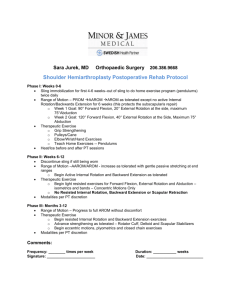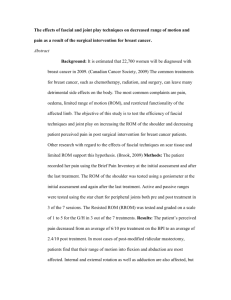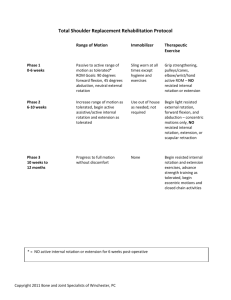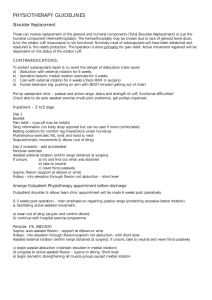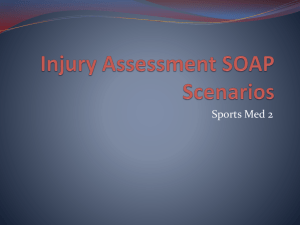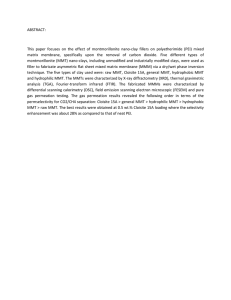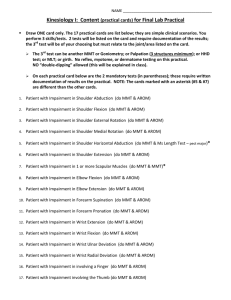SKILLS LAB: SHOULDER ROM NAME: Range of motion is defined
advertisement
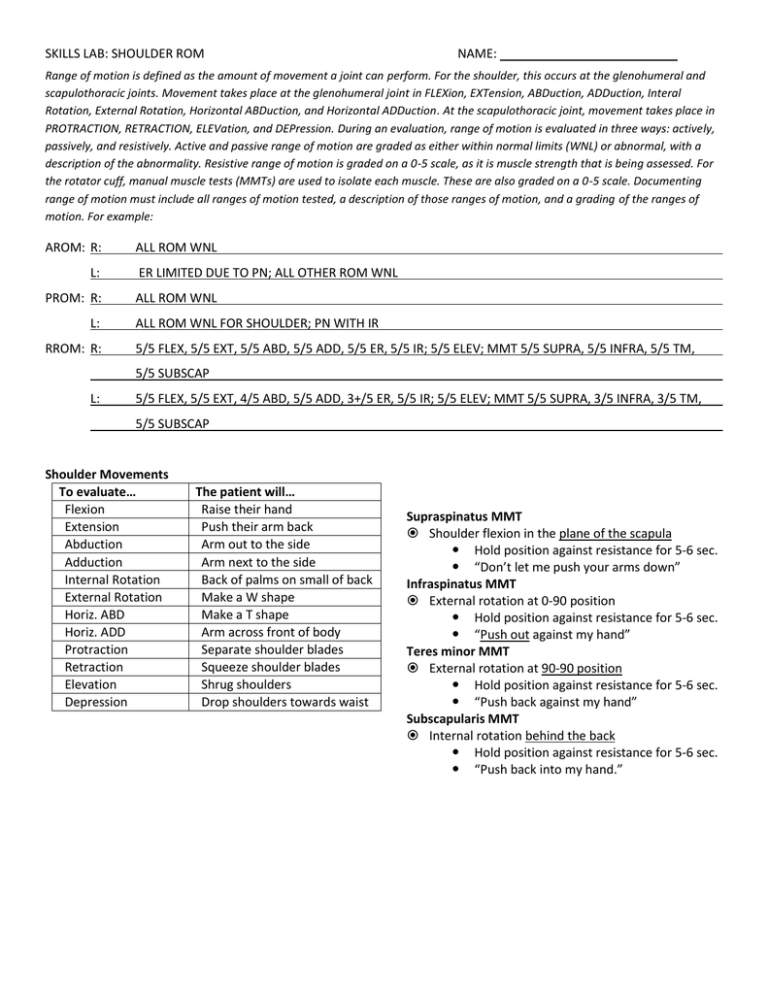
SKILLS LAB: SHOULDER ROM NAME: Range of motion is defined as the amount of movement a joint can perform. For the shoulder, this occurs at the glenohumeral and scapulothoracic joints. Movement takes place at the glenohumeral joint in FLEXion, EXTension, ABDuction, ADDuction, Interal Rotation, External Rotation, Horizontal ABDuction, and Horizontal ADDuction. At the scapulothoracic joint, movement takes place in PROTRACTION, RETRACTION, ELEVation, and DEPression. During an evaluation, range of motion is evaluated in three ways: actively, passively, and resistively. Active and passive range of motion are graded as either within normal limits (WNL) or abnormal, with a description of the abnormality. Resistive range of motion is graded on a 0-5 scale, as it is muscle strength that is being assessed. For the rotator cuff, manual muscle tests (MMTs) are used to isolate each muscle. These are also graded on a 0-5 scale. Documenting range of motion must include all ranges of motion tested, a description of those ranges of motion, and a grading of the ranges of motion. For example: AROM: R: L: PROM: R: L: RROM: R: ALL ROM WNL ER LIMITED DUE TO PN; ALL OTHER ROM WNL ALL ROM WNL ALL ROM WNL FOR SHOULDER; PN WITH IR 5/5 FLEX, 5/5 EXT, 5/5 ABD, 5/5 ADD, 5/5 ER, 5/5 IR; 5/5 ELEV; MMT 5/5 SUPRA, 5/5 INFRA, 5/5 TM, 5/5 SUBSCAP L: 5/5 FLEX, 5/5 EXT, 4/5 ABD, 5/5 ADD, 3+/5 ER, 5/5 IR; 5/5 ELEV; MMT 5/5 SUPRA, 3/5 INFRA, 3/5 TM, 5/5 SUBSCAP Shoulder Movements To evaluate… Flexion Extension Abduction Adduction Internal Rotation External Rotation Horiz. ABD Horiz. ADD Protraction Retraction Elevation Depression The patient will… Raise their hand Push their arm back Arm out to the side Arm next to the side Back of palms on small of back Make a W shape Make a T shape Arm across front of body Separate shoulder blades Squeeze shoulder blades Shrug shoulders Drop shoulders towards waist Supraspinatus MMT Shoulder flexion in the plane of the scapula Hold position against resistance for 5-6 sec. “Don’t let me push your arms down” Infraspinatus MMT External rotation at 0-90 position Hold position against resistance for 5-6 sec. “Push out against my hand” Teres minor MMT External rotation at 90-90 position Hold position against resistance for 5-6 sec. “Push back against my hand” Subscapularis MMT Internal rotation behind the back Hold position against resistance for 5-6 sec. “Push back into my hand.” In this lab, students will pair up with a classmate and assess, grade, and document the range of motion for the shoulder. Students will have the instructor observe and sign-off on their ability. Examiner: Patient: AROM: R: L: PROM: R: L: RROM: R: L: MMT: R: L: Instructor sign-off: Review Questions 1. When assessing AROM, which movements can be assessed bilaterally at the same time? Which must be performed one side at a time? 2. List the muscles responsible for: a. Shoulder flexion b. Abduction c. Internal rotation 3. What grade would you score a MMT for the Subscapularis if the patient wasn’t able to hold the position against full resistance?
